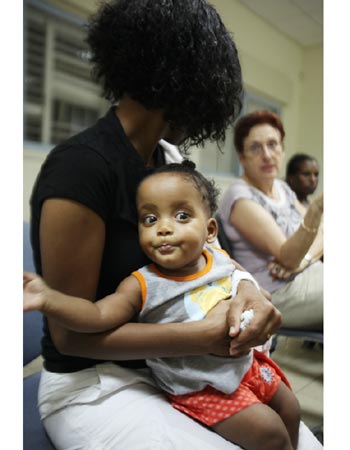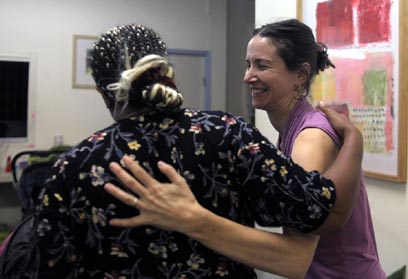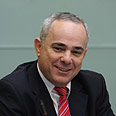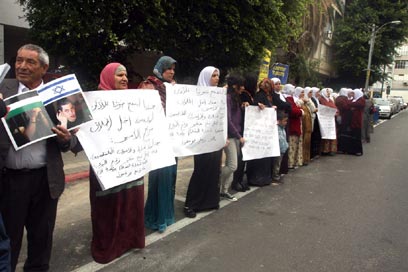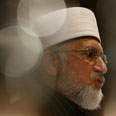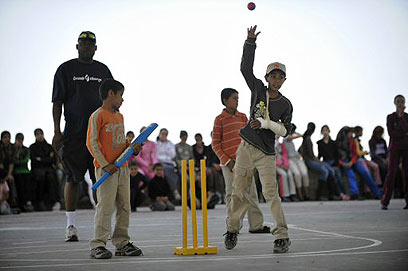Special Passover Greetings from me, a Malaysian Malay Muslim especially to my dear friend Hanan and his family.
Hanan told me a special Passover recipe typical of the Ashkenazi Jews, a Yiddish recipe, a super Jewish tradition called the Gefilte Fish. Here is the video link which shows how to make this dish http://www.videojug.com/film/how-to-make-gefilte-fish
Jewish Traditional Gefilte-Fish served during Passover
It really looks delicious to me. I love food and enjoy any types of food from all over the world and of different cultural varieties. I told my doctors that I have one illness only, i.e. I like to eat. This is my sin.
 I love also fusion foods, i.e. food made from the fusion of different cultural recipes and these are so common in Malaysia, for example I love to eat the Italian spaghetti bolognaise (spaghetti in meat ball sauce) with sambal belacan (a special very hot prawn paste chillie sauce). I know some races including Jews, Iranian and Arabs (the Smetic people) do not allow meat and fish to be eaten together but I never know why.
I love also fusion foods, i.e. food made from the fusion of different cultural recipes and these are so common in Malaysia, for example I love to eat the Italian spaghetti bolognaise (spaghetti in meat ball sauce) with sambal belacan (a special very hot prawn paste chillie sauce). I know some races including Jews, Iranian and Arabs (the Smetic people) do not allow meat and fish to be eaten together but I never know why.This is how I would eat my spaghetti bolognaise with sambal belacan
Aaahhh! Food, glorious food!
Recently, with the influx of Iranian people into Malaysia, I began to like Iranian foods as well. I am yet to learn how to prepare good Iranian dishes, but not to worry, there are now many Iranian restaurants in Malaysia.
On this Passover, Hanan has made this gefilte fish for his family and he invited me over to his house. Thank you Hanan, inshaAllah, I would drop by someday to enjoy your special recipe, apparently handed down from his mother. Otherwise I can join you online. I can “share” your e-gefilte-fish since we are supported by online multi-media from digitized clours (RGB) technology. But unfortunately I will not be able to smell or taste it electronically. I was discussing with Hanan on the possibility of digitizing smell and taste. I am sure it can be done. We need to look for the primary and standards. Although there are already efforts to digitize smell, I have not found on digital taste bud.
Before all that technologies made possible, perhaps I could try to make gefilte-fish myself. Looking at the video, it does not look all that difficult. These are quite similar to fishballs except it is difficult to get the “matzah meal” here since it is the crumbs of a special unleavened bread/biscuit Jews would take during the Passover. However, I was told this could be substituted with “chappati bread crumbs”. Emm, I shall try that. As for the fish, we have plenty of white fish, like jenahak, kurau, tenggiri and senangin, these are equally delicious white fish, to cook any which way, their meaty tasty fishy flavours are superb.
However, being a Malaysian and Malay myself, my taste buds are rather too spoilt for extreme taste. I would be tempted to add more spicy ingredients to this authentic Jewish recipe. Therefore, pardon me, may I suggest some modifications to this recipe to suit our Malaysian taste buds. Here are some of those variations to gefilte-fish Malaysian style. I use videojug recipe as the base recipe for 1kg fish meat.
1. Gefilte-fish with coconut

 For this variation, just add 100g of grated coconut instead of matzoh meal. The rest of the recipe remains the same. The taste of coconut is rich and makes the fish taste better. Our Kelantanese culture (Kelantan is one north eastern state of the Malay Penansular) has a similar kind of fish ball with coconut stuff in chilli (solok lada), which is served with their nasi kerabu (the only “blue salad rice” in the world). May be, just may be, a long time ago, some Malayan Jews had introduced gefilte-fish recipe to a Kelantanese who later modified it with coconut because he could not get the matzoh meal. Nasi kerabu (blue rice salad) usually eaten with solok lada (on right).
For this variation, just add 100g of grated coconut instead of matzoh meal. The rest of the recipe remains the same. The taste of coconut is rich and makes the fish taste better. Our Kelantanese culture (Kelantan is one north eastern state of the Malay Penansular) has a similar kind of fish ball with coconut stuff in chilli (solok lada), which is served with their nasi kerabu (the only “blue salad rice” in the world). May be, just may be, a long time ago, some Malayan Jews had introduced gefilte-fish recipe to a Kelantanese who later modified it with coconut because he could not get the matzoh meal. Nasi kerabu (blue rice salad) usually eaten with solok lada (on right).2. Gifilte-fish with basil (daun selasih) and tamarind (asam jawa) sauce

 For this variation, the preparation of the fish remains the same, but the sauce is modified by adding a bunch of fresh basil leaves (daun selasih) and a tablespoon of tamarind juice to the pot while boiling the sauce. Daun selasih or basil leaves (left) and tamarind paste (right).
For this variation, the preparation of the fish remains the same, but the sauce is modified by adding a bunch of fresh basil leaves (daun selasih) and a tablespoon of tamarind juice to the pot while boiling the sauce. Daun selasih or basil leaves (left) and tamarind paste (right).3. Gefilte-fish with spicy sauce (the not so hot version)
 For this variation, the preparation of the fish remains the same, but while preparing to boil the sauce, add a tablespoon of coriander, 1 teaspoon of fennel seed (jintan manis) ,1 teaspoon cumin (jintan putih) , 3 cloves (cengkih), 3 cardimons (buah pelaga), and an inch of cinnamon (kayu manis). This will modified a bit the taste of the sauce to the alluring taste of Indian spices.
For this variation, the preparation of the fish remains the same, but while preparing to boil the sauce, add a tablespoon of coriander, 1 teaspoon of fennel seed (jintan manis) ,1 teaspoon cumin (jintan putih) , 3 cloves (cengkih), 3 cardimons (buah pelaga), and an inch of cinnamon (kayu manis). This will modified a bit the taste of the sauce to the alluring taste of Indian spices.See if you recognize these spices (fennel, cardamons, cumin, coriander. cloves and cinnamon).
4. Gefilte-fish with hot-spicy sauce
For this variation, just add a lot of hot pepper to the sauce. To make it chanllenging, add small pepper (cili padi), bunga kantan and daun limau purut (kiffir lime leaves). This variation will transform the gefilte-fish into the hot tom-yam Siamese style, wow!
Traditional Siamese tom-yum soup; gefilte-fish in a tom-yum may be delicious.
5. Gefilte-fish with santan (coconut milk)and lemon grass (serai) sauce
This variation will blend the gefilte-fish with the authentic Malay style cooking. Add lemon grass at the beginning of boiling the sauce. When this sauce is read filtered, add coconut milk and simmer it further for another 15 minutes.
There you are, my Passover presents, 5 different varieties of gefilte-fish recipe to try for the future Passover (too late for this year).
In the tropical countries, as with our climate which support mega diversity, we (tropical people) love varieties and variations, and these include our tendency to change traditional cooking recipe. But knowing Hanan and the Jewish tradition (he coaches me on this) the close and exclusive nature of the Jews may take offense on breaking their great tradition. Therefore, I beg you pardon a thousand pardons, if these recipe variations seem to adulterate the original super tradition of the gefilte-fish. It is only a recipe.
Although at the beginning, I greeted to both my Jewish friends and enemies. I do not really have any Jewish enemy. It is only a figurative speech on my part to attract audience, a cheap advertisement trick. However, I do know, some Jews really hate the Muslims. Therefore, here I am appealing to these people at least to review their thinking and outlook. As I write these down, I also realize, there are some Muslims who hate the Jews to their bones, to them I also make an appeal (if they read this article), to change their attitude. There is nothing to fight, really.
Wassalam. Friendship first!
p.s. Happy Passover to D, forgive me I have not reply to you, since I have been extremely busy. I will one day.
By Manggis Malaysia






